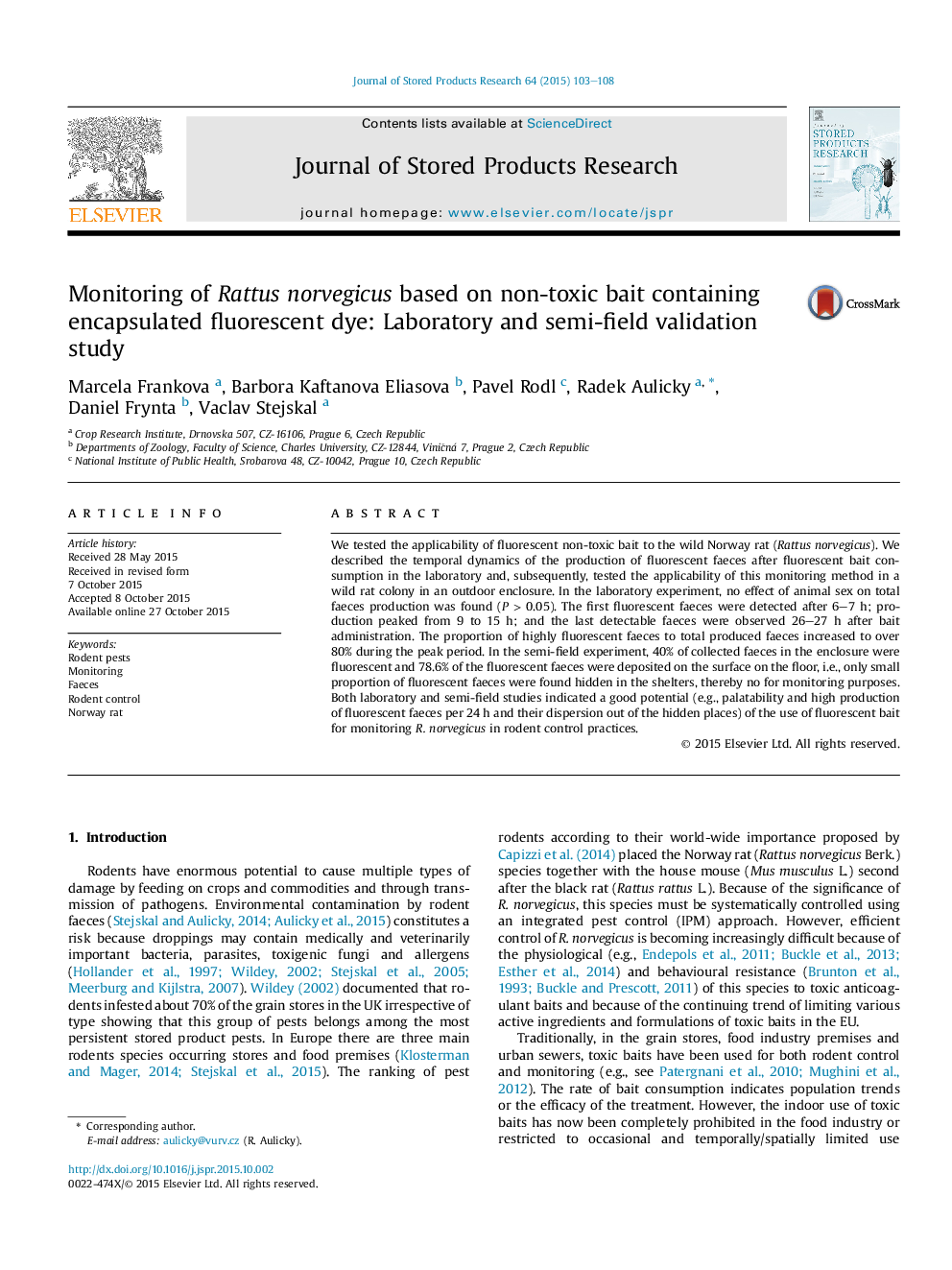| Article ID | Journal | Published Year | Pages | File Type |
|---|---|---|---|---|
| 4516950 | Journal of Stored Products Research | 2015 | 6 Pages |
•Rats produce fluorescent faeces 9–15 h after the consumption.•Rats consumed the fluorescent non-toxic bait readily.•Rats deposited 78% fluorescent faeces on the surface in the outdoor arena.
We tested the applicability of fluorescent non-toxic bait to the wild Norway rat (Rattus norvegicus). We described the temporal dynamics of the production of fluorescent faeces after fluorescent bait consumption in the laboratory and, subsequently, tested the applicability of this monitoring method in a wild rat colony in an outdoor enclosure. In the laboratory experiment, no effect of animal sex on total faeces production was found (P > 0.05). The first fluorescent faeces were detected after 6–7 h; production peaked from 9 to 15 h; and the last detectable faeces were observed 26–27 h after bait administration. The proportion of highly fluorescent faeces to total produced faeces increased to over 80% during the peak period. In the semi-field experiment, 40% of collected faeces in the enclosure were fluorescent and 78.6% of the fluorescent faeces were deposited on the surface on the floor, i.e., only small proportion of fluorescent faeces were found hidden in the shelters, thereby no for monitoring purposes. Both laboratory and semi-field studies indicated a good potential (e.g., palatability and high production of fluorescent faeces per 24 h and their dispersion out of the hidden places) of the use of fluorescent bait for monitoring R. norvegicus in rodent control practices.
